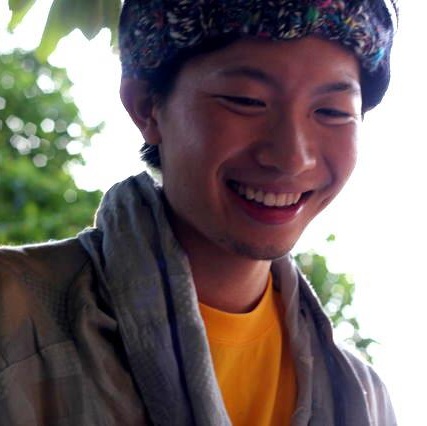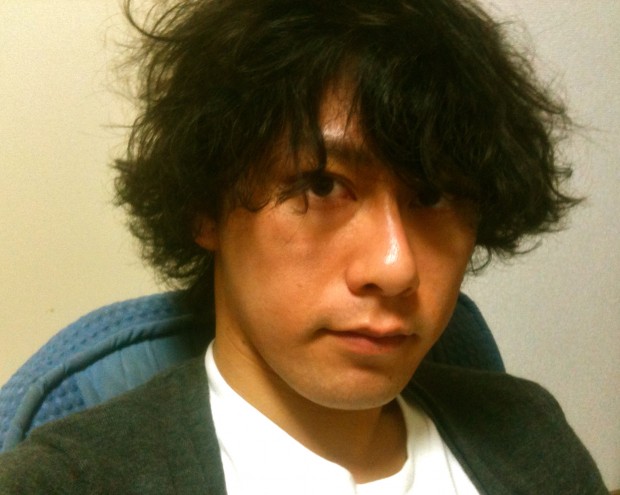Field Trip Project
Field Trip Project is a mobile/ participatory/ interactive art exhibition installed within Japanese elementary school backpacks. Traveling to various locations, it connects people and bridges communities. Remote from the white cubes of art galleries and museums, literally everywhere is its venue; from an empty field in the disaster-affected areas to shopping streets and residential neighbourhoods. Every interaction with the project becomes a memory towards the future.
Field Trip Project would like to connect with you. Let us know if you are curious!
The origin
At the end of the school year in March 2012, a number of unused relief supplies gathered in gymnasium of Onagawa Daiichi Junior High School were scheduled to be either shipped to developing countries or treated as waste. Toronto based visual artist Daisuke Takeya with Chie Kajiwara, an Onagawa based art teacher, suggested an alternative use for the Japanese elementary school backpacks among the surplus. A large number of these backpacks were entrusted to them, and a set of thirty five were sent to Canada to be transformed by passionate Canadian contemporary artists into a mobile art exhibition. They were then sent back to Onagawa again and re-used to empower people through communication with art.
The project will travel to a variety of cities and inspire ideas towards the recovery. It also focuses on community issues at each destination, and will investigate what makes vibrant and sustainable communities.
遠足プロジェクト
遠足プロジェクトはランドセルを使用した移動式インタラクティブギャラリーです。遠足を通じて、人と人、地域と地域をつないでいくプロジェクトです。美術館やギャラリーといった一般的なアートの領域から飛び出した作品たちは、商店街や住宅、空き地・・・どこへでも遠足に出かけていくことができます。様々な地域の町、人々と関わりを持つことで、未来へ向けた新たな記憶を刻んでいきます。
遠足プロジェクトは、巡回を通じてネットワークを広げていきます。ぜひ私の町にも、という方はご連絡下さい。
プロジェクトの経緯
2012年3月、カナダ トロント市在住のアーティスト・武谷大介と女川町在住の美術教師・梶原千恵が、使用されず廃棄処分となっていた支援物資の中古ランドセルを女川第一中学校から譲り受けた事から始まりました。ランドセルのうち35個はカナダへと送られ、35組のアーティストによってアート作品に姿を変えました。そして、これらのアート作品は再度被災地へと送られ、元々の始まりである被災地支援への思いが、アートというコミュニケーションの形で地域の方達へ届けられる形となりました。
今後遠足プロジェクトは、様々な「まち」へと遠足(巡回)し、被災地の現状を伝えながら復興のアイディアを考えていきます。そして、それぞれの巡回先でのコミュニティーの課題にも目を向けゆくことで、真の意味での地域活性化とネットワーク作りを考えていきます。
遠足プロジェクト実行委員会
被災地と非被災地に拠点を持つ以下2団体によるこの共同プロジェクトです。被災地で刻々と変化するニーズと現状への対処、震災の風化の防止と継続的な支援を目的に、アートを通して街と人を元気にすることを目的としています。
Chie KAJIWARA (Onagawa, Miyagi) Representative of High School Student Café / Art Instructor of Junior High School
高校生カフェ代表/中学校美術教師:梶原千恵(宮城県女川町在住)

Since the Great East Japan Earthquake, I have been doing artistic volunteer activities and have come to feel “the power of art” on a very deep level. I think art has an ability to kickstart a community, which other professions like food service and entertainment do not have. Through my volunteer activities, I have come up with a dream to make an art gallery in Onagawa but it is actually difficult to have such a place under these circumstances. Then Daisuke Takeya and I had an idea of “field trip,” a mobile gallery that would visit local shops and houses.
Conditions in the disaster area change day by day. However, it has been a year and half since the disaster and information on the situation does not reach outside of the area. I cannot deny that there is a gap between the disaster areas and the rest of the country. Even in the disaster area, I can feel varying degrees of awareness. I think we need more communication.
Art that transcends borders, generations, and regions triggers reactions from people in unexpected fields and connects them together. And so the “field trip” connects region to region. Not only should it solve the lack of communication in the disaster areas, but it can also give us clues in helping solve various problems in communities.
I think it is significant that the “field trip” started from the disaster area in Onagawa. By spreading new art from an area that has received so much support until now, we would like to express our gratitude for everything you have given us. Also, it would be our pleasure if we could spread a positive message to show that it is possible to start something such as this out of nothing.
震災後からアートを通してボランティア活動を行い、「アートのちから」を実感してきました。コミュニティをつくるきっかけとして、アートは飲食や娯楽にない引力をもっていると思います。そのような活動を通して、私は女川にギャラリーを作りたいという夢をもちました。しかし、そのようなスペースを女川町で確保することは現状では難しいです。そこでギャラリーが移動し、商店や住宅を訪問する「遠足」を武谷大介さんと考えました。
被災地の状況は刻々と変わっています。しかし、震災から約1年半経った現在、被災地以外でその報道を見ることありません。被災地とそれ以外の地域での温度差が生じることは否めません。また、被災地でも地域に関心のある層と関心の低い層で意識にズレが生じています。「コミュニケーション」が必要だと思いました。
年齢や地域をあっさり飛び越えるアートは、予想しなかった人々の反応や、人と人とのつながりをもたらしてくれます。そして、「遠足」によって地域と地域をつなぎます。被災地のコミュニケーション不足を解決するだけでなく、様々な地域の課題を解決してくれるヒントを与えてくれるでしょう。
「遠足」が被災地である女川町で始まったことに意義があると思います。これまで支援される側として受け身であった被災地から新しいアートを発信することによって、これまでの支援に対して感謝の気持ちを表したいです。また、何もないところでもこんな事ができるというポジティブなメッセージを発信できればと思っています。」
Daisuke TAKEYA (Toronto, Canada) Founder of DAICHI Projects / Artist
大地プロジェクト代表/アーティスト:武谷大介(カナダトロント市在住)
daisuketakeya.com

daichiprojects.org
DAICHI Projects is a process-based and long-term platform that sets up art projects and holds workshops based on children’s ideas in order to pursue the reconstruction of Japan. Through art projects, we make an appeal to society that asks how we can give a bright future to our children in Japan.Toronto is where I am currently based and this city consists of immigrants from all over the world. Here it is a fundamental yet daily task to think about how to coexist with people with different languages, cultural backgrounds, and sense of values. After the Great East Japan Earthquake in 2011, we had many reconstruction support events in the city, and many Canadian people expressed their condolences to the disaster areas. However, as time went by events and activities for the disaster here in far away Canada began to dwindle. Then news came of many “items” being swept away by the tsunami were drifting to Canada and the West Coast of North America. According to experts, this drifting will continue into the future. For me, it looked as if this was telling us that the disaster was not a story of long ago about some foreign country, but rather this phenomenon was locking Canada and Japan together in a natural cycle. And then I saw a used Japanese school bag that was supposed to be a relief supply but was never used. At the same time that I knew deeply that we simply cannot stop our support of the Japanese people, I also became conscious of material things. The 20th century was one where our attachment to material affluence came to pass. t I feel that society now in the 21st century has been changing to one of spiritual affluence. Nothing would make me happier than if we all could learn how to use the medium of art to change “material things” into “experiences” and connect and improve communication with various communities.>
大地プロジェクトは、こどもたちの視点やアイデアをもとにアートプロジェクトを立ち上げたりワークショップを開催しながら、日本の復興を考えて行くプロセス重視の長期型プラットフォームです。日本に住むこども達に明るい未来を残して行くにはどうしたらいいのかをアートプロジェクトを通じて社会に訴えかけていきます。daichiprojects.org
僕が拠点としているカナダのトロント市は、世界中からの移民によって社会が成り立っています。言語や文化背景、価値観の異なる人々がどう共存していけるのかを考えるのは、日常必須の課題でもあります。2011年の東日本大震災直後には、トロントでも多くの復興支援イベントが立ち上げられ、多くのカナディアンが被災地への深い追悼の思いを形にしましたが、遠く離れた地カナダににおいては、時間とともに目立った活動はあまり見られなくなりました。そんな中で、カナダをはじめとした北米の西海岸へ津波でさらわれた多くの「モノ」が漂着するという出来事がありました。そして、専門家によるとその量は今後増えていくと見られています。僕にとっては、この現象は震災がカナダにおいて遠い国での過去の出来事ではなく、自然のサイクルの中では継続的に日本とカナダをつないでいるようにも見えたのです。そこに支援物資として送られてきたにも関わらず、実際には使われる事のなかった「モノ」である中古のランドセルがあったのでした。支援の思いを無駄にしてはいけないと強く感じたのと同時に、「モノ」に対して意識をするようになりました。「モノ」が人の心を豊かにしていた20世紀の社会の営みから、21世紀に入ると「意識」の豊かさを追求するように社会は変化してきているように感じています。そんな中で「モノ」がアートを介して「経験」に姿を変えながら、様々な地域社会にどう関わりながらコミュニケーションを促進していけるのか、遠足プロジェクトを通じてそういった事を皆さんと学習していく事ができたら幸いです。
Hidehiro FUJIWARA
Graduate School Education Course, Gunma University
群馬大学大学院 美術教育専修 藤原秀博
I study art education at graduate school. I have been involved with this project since I worked as a volunteer in the summer of 2011.I live in Gunma Prefecture which didn’t suffer much direct damage from the disaster, so it was quite an experience for me to join this local art project after having seen the devastated area.In my opinion, art has the power to connect and change people. By seeing and connecting with these pieces I began to think about how I can dedicate myself to my community for the future.Each schoolbag is filled with thoughts and emotions. These thoughts have the power to create a new bond between us.I hope that people from outside the devastated areas can also enjoy this project.
大学院で美術教育を学んでいます。夏のボランティア活動をきっかけに今回のプロジェクトに関わらせていただきました。被災地の現状を見て現地のアート活動に関わったことは、直接的被害は少ない群馬に住む私にとって、衝撃的な体験でした。アート作品は、人と人をつなぐ力や、変えていく力を持っていると思います。私自身も作品に触れることで、自分の住むコミュニティで未来に向けてなにかできることはないかと考えるようになりました。作品となったひとつひとつのランドセルには思いが詰め込まれています。その思いは人と人との結びつきを新たにつくっていく力があります。被災地から発信されるこのプロジェクトを、ぜひ被災地外の人にも体験していただけると幸いです。
Ryota KASAHARA
笠原遼太

Born in Ibaraki, currently living in Tokyo
Ryota is an undergraduate student of the Department of Architecture, Faculty of Engineering Division, Tokyo University of Science. He is interested in urban architecture. In February 2012, Ryota came across the Fieldtrip project while he was conducting a survey and trying to figure out a way to stimulate the community through the power of art. He now works as an intern for the project and TOKYO SOURCE.
Likes:
– discovering interesting things in the everyday that you can find when you shift your perspective
– Unique and creative ideas that come about using familiar objects
– fashion, art museums, and cafés
Wishes:
– to take action that can help art become a part of one’s lifestyle
facebook:http://www.facebook.
茨城県生まれ東京都在住
東京理科大学理工学部建築学科に所属し、
2012年2月から宮城県石巻市でアセスメント調査を行い、
facebook:http://www.facebook.


